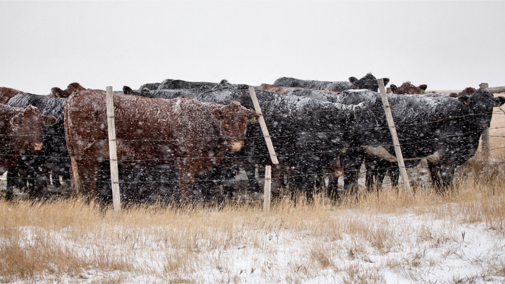U.S. Department of Agriculture (USDA) Farm Service Agency (FSA) in Nebraska is reminding the state’s producers who suffered impacts due to recent severe winter weather of programs that may be available for assistance.
Agricultural producers are encouraged to contact the FSA county office at their local USDA Service Center to learn about programs and how to apply for assistance, including understanding needed documentation, such as farm records, herd inventory, receipts and pictures of damages or losses.
“The recent extreme cold and winter weather has been a challenge for farmers and ranchers in Nebraska,” said Tim Divis, acting state executive director for Nebraska FSA. “We know some producers have experienced losses or other impacts. USDA offers disaster assistance programs that may be able to help.”
FSA Disaster Assistance Programs
Producers who experience livestock deaths due to the winter storms may be eligible for the Livestock Indemnity Program. Meanwhile, the Emergency Assistance for Livestock, Honeybees, and Farm-Raised Fish Program may provide eligible producers with compensation for livestock and honeybee feed needs above normal due to extreme winter weather. For LIP and ELAP, both require producers to file a notice of loss as well as an application for assistance. Documentation of livestock losses and other impacts is extremely important for both programs, and producers are encouraged to contact their county FSA office as soon as possible for details on those documentation needs. Examples of documentation for livestock losses and establishment of beginning livestock inventory includes, but is not limited to, pictures of losses with a time and date-stamp (if possible), purchase records, production records, vaccination records, bank or other loan documents or third-party certification.
The Emergency Conservation Program can assist landowners and livestock producers with financial and technical assistance to restore damaged fence lines and remove snow from feed stocks, water supplies and feeding areas. ECP implementation begins at the local level when conditions meet program requirements and the FSA County Committee requests, and is approved for, implementation. Like the above programs, documentation also is important for ECP assistance. Producers are encouraged to keep daily logs of snow removal efforts taken for feeding livestock during the severe winter weather as potential documentation in the event ECP is implemented in their county.
Eligible orchardists and nursery tree growers may be eligible for cost-share assistance through the Tree Assistance Program (TAP) to replant or rehabilitate eligible trees, bushes or vines lost during the winter storms. A program application must be filed within 90 days of the disaster event or the date when the loss becomes apparent.
More Information
On farmers.gov, the Disaster Assistance Discovery Tool, Disaster-at-a-Glance fact sheet, and Farm Loan Discovery Tool can help producers and landowners determine other program or loan options.

